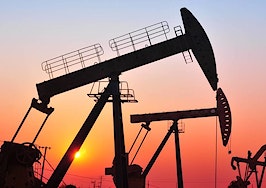- In 2005, 80 percent of New Orleans and the nearby parishes became flooded with water levels reaching up to 20 feet.
- Multi-billion-dollar natural disasters such as Katrina are becoming more common.
- Florida's population has grown from 2.8 million in 1950 to more than 20 million in 2016.
On Aug. 23, 2005, the hurricanes at Pat O’Brien’s — the famed French Quarter watering hole — were flying off the bar. Few in the Sportsman’s Paradise had noticed the formation of small tropical depression germinating in the warm Atlantic Ocean waters that summer. Everyone in the Big Easy was enjoying life and letting the bon ton roulette (the good times roll).
Meanwhile, meteorologists at the National Weather Service in Springfield, Maryland, were tracking the small storm twirling in the Atlantic near the Bahamas — dubbed Tropical Depression 10 — slowly heading north west towards Miami, Florida.
Nature’s casino
In New York City, weather odds-makers — meteorologists, statisticians, oceanographers and mathematicians — set the odds of Tropical Depression 10 turning into a catastrophic hurricane at a 100 to one chance. Everyone at nature’s casino had placed their bets. All the experts agreed: the likelihood of a monster storm that destroys $100 billion in insured property happens only once every hundred years.
But the weather bookies got it wrong; they got it wrong big time.
Six days later, Hurricane Katrina slammed into the Gulf Coast on Aug. 29, devastating coastal Louisiana and Mississippi with ferocious winds, record storm surge and catastrophic flooding.
Katrina, which killed 1,836 people, displaced another 400,000 and caused $135 billion in damage, was not only the costliest hurricane in U.S. history, but it was also the costliest natural disaster in the world, according to a National Weather Service report.
The levees that protect New Orleans, which is below sea level, were designed for a Category 3 hurricane, but Katrina was a monster Category 5 hurricane — packing unimaginable sustained winds of 175 mph. The levees along the Mississippi River were strong, but the levees built to hold back Lake Pontchartrain, Lake Borgne and the swamps and marshes to the city’s east and west were less reliable.
Initially, two levees were breached — the Industrial Canal and the 7th Street Canal — tossing homes off their foundations and submerging much of the lower Ninth Ward and areas nearby, including St. Bernard Parish, Metairie and the Lakefront, trapping thousands of people on rooftops and in attics.
Later, the 17th Street Canal levee ruptured, which resulted in a slow-rising flood over the Lakeview area, including Metairie and Mid City, according to the National Weather Service. Other levees would soon fail too. Ultimately, 80 percent of New Orleans and the nearby parishes became flooded with water levels reaching 20 feet in some areas — and the flood waters did not recede for four weeks.
Millions were left homeless along the Gulf Coast and New Orleans. More than 1 million homes in the Gulf Coast region were flooded, destroyed or made unlivable — 10 times the number that had been similarly affected by Hurricane Andrew in 1992, according to the Claims Journal, an insurance industry trade publication. The storm caused $81 billion in insured losses on homes, businesses and cars, according to the U.S. Census.
The vast emptying and diaspora of New Orleans was unprecedented in modern American history. The population of the New Orleans region was decimated — shrinking from over 1 million to 581,000.
A new era of catastrophe
Multi-billion-dollar natural disasters such as Katrina are becoming more common. Every year, the United States foots a multi-billion dollar bill for economic and insured losses incurred from natural disasters. In 2015, the costs reached $25 billion with certain regions of the country more prone to calamity than others, especially coastal communities, according to the German reinsurer Munich RE.
Five of the 10 costliest, in terms of money were in the past decade. Globally, Munich RE reckons, insurers paid out around $378 billion for natural disaster claims in 2011, breaking the previous record of $262 billion in 2005. (See “10 Most Costly Insured Catastrophes” chart.)

Howard C. Kunreuther
According to Howard C. Kunreuther, a professor and co-director at the Wharton School’s Risk Management and Decision Processes Center at the University of Pennsylvania, the world has entered a new era of catastrophes. Kunreuther claims we are more vulnerable today to catastrophic losses because of the increasing concentration of population in high-risk coastal regions of the country and the changing dynamics of climate.
”The natural hazard damages have increased significantly in recent years,” Kunreuther said, referring to the quickening pace of natural disasters. “A lot more people are moving to hazard-prone areas. And with climate change and sea level rising, more homeowners are at risk.”
Clustering near catastrophe
Increasingly, Americans are moving disproportionately into hurricane-prone coastal areas, claims Kunreuther. Consider Florida. The state’s population has grown from 2.8 million in 1950 to more than 20 million in 2016.
From 1930 to 2015, the population of Broward County, Florida, increased from 20,000 to 1.9 million (a 9,400 percent increase), while Miami-Dade County rose from a population of 130,000 to 2.7 million in 2015 (a 1,970 percent increase), according the Census Bureau.
Read the entire article in the May 2016 Housing News Report
Octavio Nuiry is the managing editor of RealtyTrac.












